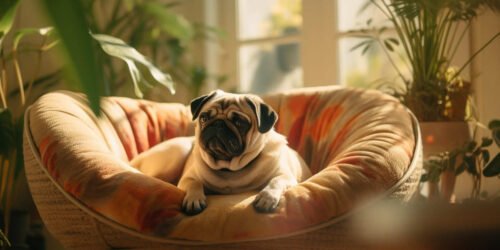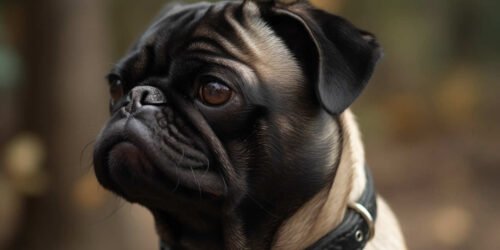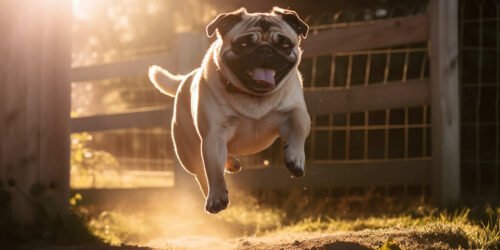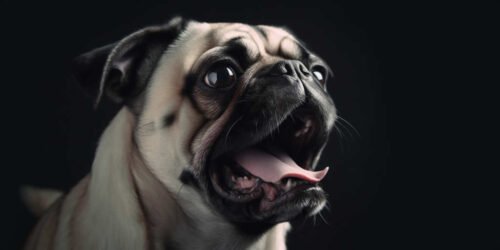Why Do Pugs Lick So Much?
Introduction
Have you ever wondered why Pugs seem to be extra affectionate with their licking habits? Our adorable, wrinkly-faced friends are known for being quite expressive and endearing, and their excessive licking could be one of the ways they show it.
In this blog post, we’ll explore the various reasons behind this unique canine behavior – from natural grooming tendencies to underlying health concerns. We’ll also discuss how to prevent any obsessive licking in your pug pal.
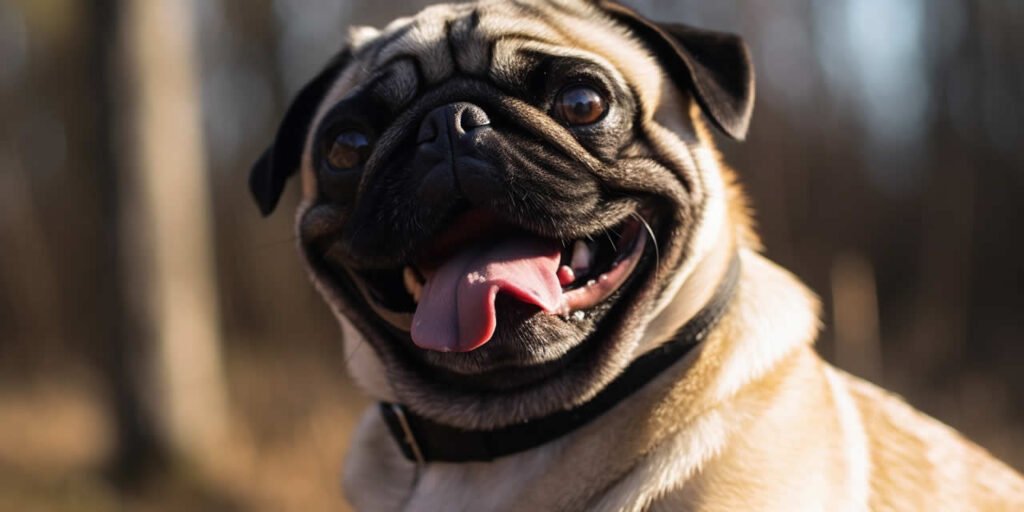
Table of Contents
Key Takeaways
- Pugs lick for various reasons, including natural grooming behavior, affection and bonding, anxiety and stress, and medical issues or pain.
- Understanding why your Pug is licking excessively is essential for addressing any underlying medical problems promptly.
- To prevent excessive licking in pugs, owners can provide mental and physical stimulation, redirect behavior through training, and address any underlying medical concerns. It’s crucial to consult with a veterinarian if you suspect an underlying health issue causing this behavior.
- Licking in moderation strengthens the bond between owner and pet while providing comfort to our furry friends; it’s important not to discourage this natural behavior altogether.
Reasons Why Pugs Lick So Much
Pugs lick so much for various reasons, including natural grooming behavior, affection and bonding, anxiety and stress, and medical issues or pain.
Natural Grooming Behavior
As a proud pug owner, I can confidently say that these cute little dogs are big on natural grooming behavior. This is an essential aspect of canine hygiene and cleanliness.
Pugs will often lick themselves to keep their fur clean and free from debris, just like other breeds.
What’s fascinating about our lovable pugs is that licking isn’t limited to self-grooming; maternal grooming plays a significant role too! Mother pugs lovingly clean their puppies as soon as they’re born to establish a bond and help stimulate the newborns’ senses.
Affection And Bonding
One of the primary reasons pugs lick so much is to express their affection and strengthen the bond with their owners. These adorable little canines are known for being very loving, loyal, and attentive to those they care about.
In fact, licking releases endorphins in dogs that help soothe pain or stress they may be experiencing. As a way of canine communication, this licking behavior demonstrates their respect and acknowledgement towards you as an owner since it serves as a submissive act within dog psychology.
Anxiety And Stress
As a pug enthusiast, I’ve noticed that anxiety and stress are among the top reasons why these adorable dogs tend to lick so much. Just like humans, our canine companions experience their fair share of emotional challenges.
Licking releases endorphins in dogs, providing them with a sense of contentment and relief from discomfort. This repetitive behavior can become obsessive if not addressed or if the underlying issue is left unresolved.
For example, when my neighbour’s pug was dealing with dog anxiety due to construction noise in their area, they noticed he began excessively licking his paws as a coping method during those distressing times.
Medical Issues And Pain
As with any breed of dog, pugs can experience various medical issues that could cause them pain and lead to excessive licking. Pugs are prone to allergies, which can cause skin irritation and itching.
If your pug is continually licking their paws or rubbing their face against furniture, it may be a sign of an allergic reaction. Dental problems are also common in the breed, especially as they age.
In some cases, excessive licking could point to more severe health concerns such as arthritis or neurological issues.
Pet owners should never ignore persistent symptoms like these; a prompt visit with the vet will guarantee early detection and treatment options for underlying health conditions that contribute to abnormal anxiety levels leading to excessive licking in dogs such as pugs.
Overall, understanding why your Pug is continuously over-licking is crucial for addressing any underlying medical problems promptly.
Preventing Excessive Licking In Pugs
To prevent excessive licking in Pugs, owners can provide mental and physical stimulation, redirect behavior through training, and address any underlying medical issues – read on to learn how.
Providing Mental And Physical Stimulation
As a pug owner, I know how important it is to provide daily exercise and mental stimulation for my furry friend. Here are some ideas on how to keep your pug mentally and physically active:
- Take them for daily walks or playtime in a fenced – in area
- Provide interactive puzzle toys that require problem – solving skills
- Teach them new tricks or obedience training exercises
- Incorporate agility training with obstacles such as tunnels and jumps
- Give them opportunities to socialise with other dogs through dog parks or playdates
Remember, providing mental and physical stimulation not only prevents boredom but also helps prevent obsessive-compulsive behavior and anxiety in pugs. So, make sure to incorporate these activities into your daily routine with your pug.
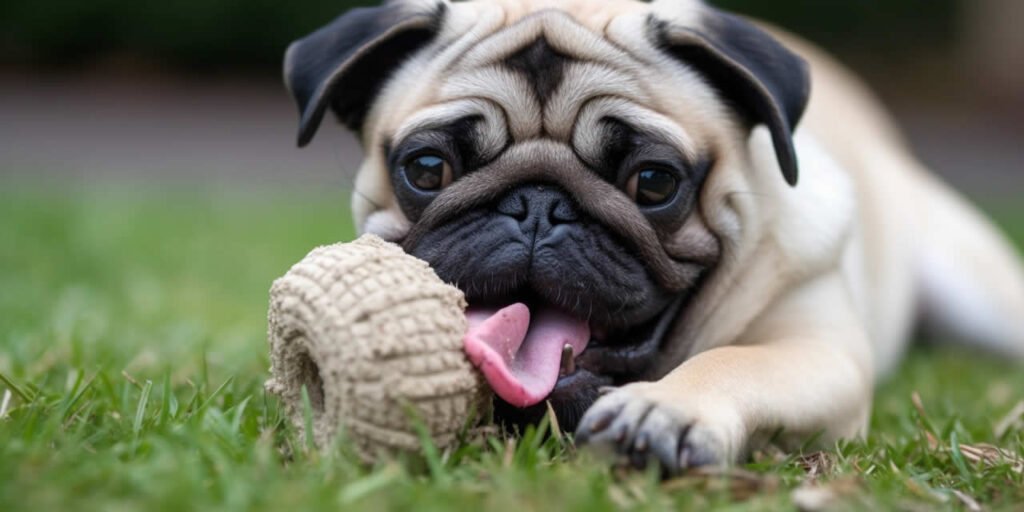
Redirecting Behavior Through Training
Redirecting a Pug’s excessive licking behavior through training can be an effective way to minimise this behavior. Here are some methods you can try:
- Provide positive reinforcement when your Pug does not lick excessively.
- Teach your Pug basic obedience commands such as “sit” and “stay.” This will give them something else to focus on instead of licking.
- Offer your pug interactive toys that will keep them busy and entertained, such as puzzle games or chew toys.
- Schedule regular exercise and playtime to help prevent boredom, which can lead to excessive licking.
- Be consistent in redirecting their attention away from licking by providing other healthy outlets for their energy.
By practising these techniques, you’ll be able to help your Pug overcome their excessive licking behavior and create a more harmonious bond between you both.
Addressing Underlying Medical Issues
As a pet owner, it’s important to be aware of any underlying medical issues your pug may have that could cause excessive licking. Some potential health concerns that can lead to obsessive behavior include allergies, pain from conditions such as arthritis or dental problems, and compulsive disorders like CCD (Canine Compulsive Disorder).
Once the root cause has been identified and addressed, treatment options may vary depending on the specific issue. For instance, if allergies are the problem, adjusting diet or medication changes might alleviate symptoms.
However, for more severe cases like CCD or anxiety-related behavior modification techniques might be needed to help calm their nerves and break this habit of theirs.
Conclusion
In conclusion, Pugs are known to be adorable and affectionate pets that love to lick their owners. While excessive licking can be a sign of anxiety or medical issues, it’s important not to discourage this natural behavior altogether.
As pet owners, we should provide our furry friends with plenty of mental and physical stimulation, redirect excessive licking through training, and address any underlying medical concerns.
Understanding why Pugs lick so much allows us to better care for them and strengthen the bond between owner and pet.
FAQs:
1. Why do pugs lick people so much?
Pugs are affectionate dogs that love to be close to their owners, and licking is a form of communication and bonding for them. Additionally, some pugs may lick excessively due to anxiety or boredom.
2. Is excessive licking harmful for my pug’s health?
In most cases, excessive licking is not harmful for your pug’s health, but it can lead to irritation and skin damage if they lick too frequently or aggressively in certain areas. It’s important to monitor this behavior and intervene if necessary.
3. How can I discourage my pug from licking excessively?
One way to discourage your pug from licking excessively is by redirecting their attention with toys or treats when you notice the behavior starting. You can also train them with verbal cues such as “stop” or “enough”, along with positive reinforcement when they comply.
4. When should I take my pug to the vet for excessive licking?
If you notice any signs of discomfort or pain in your pet related to excessive licking such as inflammation, redness/irritation on their tongue/mouth area, diarrhoea etc., then it’s best that you schedule an appointment with a veterinarian right away as these could be symptoms of an underlying medical condition that needs treatment immediately.


